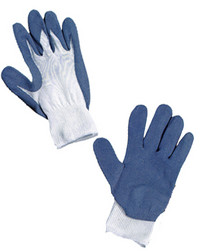KANBrief 1/14

Depending upon the materials and processes used in its manufacture, personal protective equipment (PPE) may contain hazardous substances. The current 89/686/EEC Single Market Directive and the draft EU Regulation governing PPE (see KANBrief 4/2013, Page 4) to be published shortly stipulate that the raw materials from which PPE is manufactured and their possible decomposition products must not have any harmful effects. Under what conditions however is this freedom from harm assured?
Employers have an obligation to take the measures necessary to ensure the safety and health of their employees, and also to protect groups at particular risk, such as young people, allergy sufferers and pregnant women. The rule of prevention is that of minimization: contact with substances which could have a harmful effect upon the wearer of an item of PPE must be avoided as far as possible by the use of suitable manufacturing processes. Only where this cannot reasonably be attained does the question arise of what concentrations may be tolerated in personal protective equipment in consideration of the state of the art.
Example: chrome(VI) in leather
Leather that has not been properly tanned or dyed may contain chrome(VI). Chrome(VI) may be released from the leather of protective gloves or safety footwear when these items come into contact with perspiration or other moisture or with chemical agents containing lime, and may consequently be absorbed by the skin. It is carcinogenic; it may also cause skin allergies and eczema in sensitized individuals, even at low concentrations. It should not therefore be present in leather used in PPE. Unfortunately, low concentrations which may still be harmful to allergy sufferers cannot be ruled out completely; the concentration that may be tolerated by standardization is ultimately constrained by the detection limit of the test method used. This shows how important it is for test methods to be developed further and described correctly in product standards, and how carefully employers should consider whether PPE should be used and if so in what form, in order to prevent hazards from arising.
Example: N,N-dimethyl formamide (DMFA)
DMFA, a harmful chemical agent found in polyurethane-coated gloves, has been the subject of heated discussion for some years (sicher ist sicher, Vol. 1/2005, article on hand protection, Zuther (BVH)). It is hepatotoxic and teratogenic and is absorbed very rapidly through the skin. For this reason, the German TRGS 401 Technical Rules for Hazardous Substances (TRGS 401, "Risks resulting from skin contact") specify not only that in accordance with the state of the art, polyurethane-coated gloves must contain no more than 10 mg of DMFA per kilogramme of glove material, but also that they must not give off any DMFA.
Specification of a measurement method and a limit value for DMFA in EN 420 (Protective gloves – General requirements and test methods) is currently under discussion. The limit value under consideration is however substantially above the detection limit of common test methods, and is several times higher than the value to be observed in accordance with the TRGS 401. The advocates of a substantially higher limit value (Sicherheitsingenieur, Vol. 10/2011, project report BVH, Zuther) justify it with reference to the German occupational exposure limit (OEL) for DMFA stated in the TRGS 900 Technical Rules (TRGS 900, "Occupational Exposure Limits"). This value was however specified for exposure by inhalation during contact with DMFA as a chemical agent. The OEL also fails to cover the exposure of pregnant women to DMFA. Under Section 5 of the German ordinance governing the protection of pregnant and nursing women at the workplace (MuSchRiV), pregnant workers must not be exposed to DMFA at all, owing to its teratogenic properties.
KAN has co-ordinated the formulation of a joint position statement by the German OSH stakeholders on this issue, and is lobbying within standardization for the following points:
1. From the perspective of prevention, the OEL for DMFA cannot be used for assessment of polyurethane-coated PPE, since it was defined in relation to operational exposure at the workplace, and does not constitute protection against teratogenic effects.
2. In order to satisfy the regulations in force, manufacturers must take whatever measures are possible under the state of the art to ensure that PPE does not release any DMFA.
3. Materials exhibiting avoidable DMFA content levels, for example because they have not been washed, may also contain higher levels of other water-soluble production residues that are harmful to health.
4. DMFA levels below 10 mg/kg are attainable during production in accordance with the state of the art.
5. Should an analytical method be defined, it must be adequately validated and must have a sufficiently low detection limit.
Corrado Mattiuzzo
mattiuzzo@kan.de